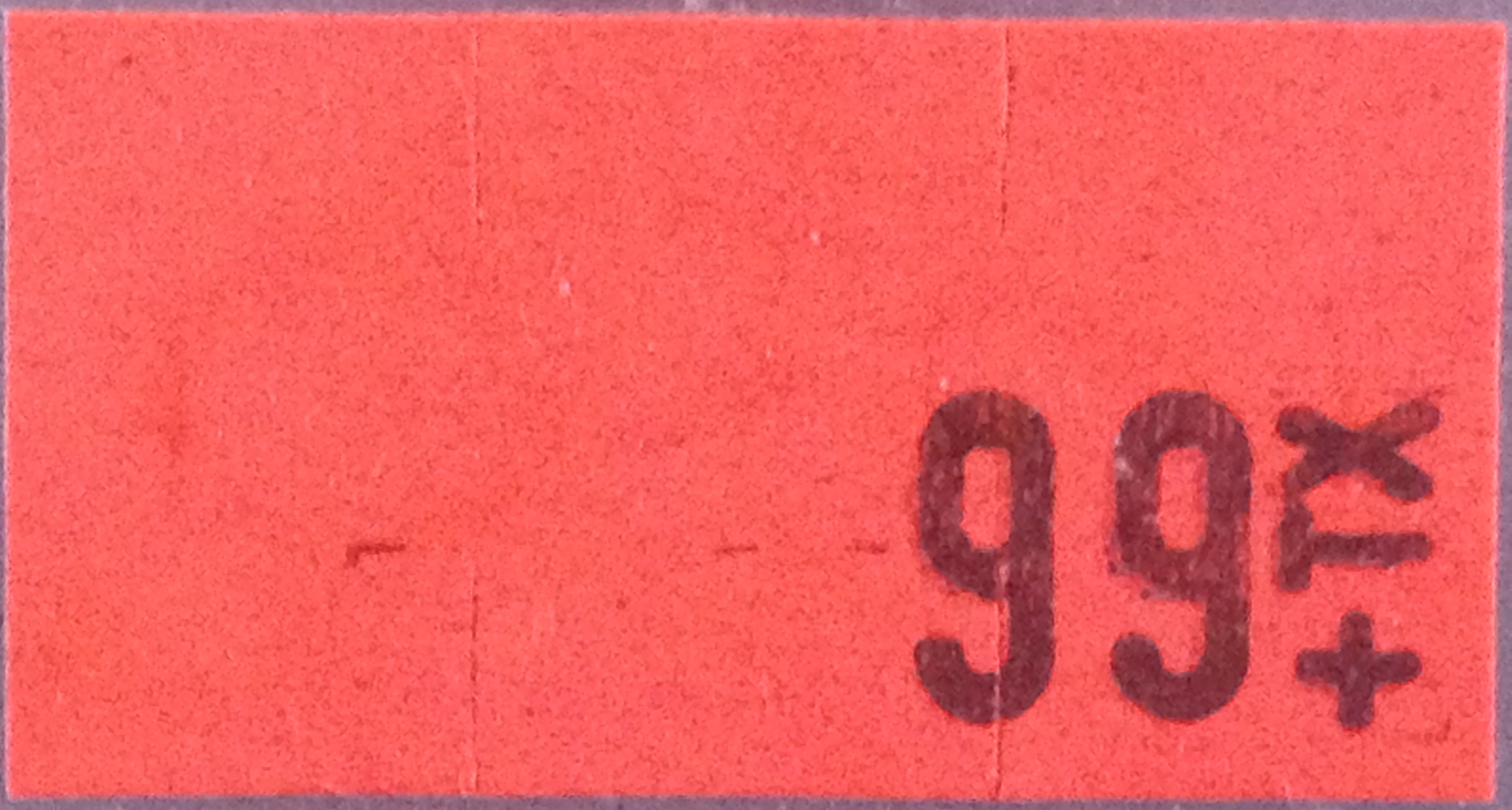Price Tag on:
[Wikipedia]
[Google]
[Amazon]

 A price tag is a
A price tag is a

 A price tag is a
A price tag is a label
A label (as distinct from signage) is a piece of paper, plastic film, cloth, metal, or other material affixed to a container or product, on which is written or printed information or symbols about the product or item. Information printed ...
declaring the price
A price is the (usually not negative) quantity of payment or compensation given by one party to another in return for goods or services. In some situations, the price of production has a different name. If the product is a "good" in the ...
of an item for sale. It may be a sticker or attached by twist tie
Twist may refer to:
In arts and entertainment Film, television, and stage
* ''Twist'' (2003 film), a 2003 independent film loosely based on Charles Dickens's novel ''Oliver Twist''
* ''Twist'' (2021 film), a 2021 modern rendition of ''Olive ...
or other means.
Some jurisdictions require items (possibly exceptions for bulk good and produce) to be individually marked with the price, or have shelf tags or barcode
A barcode or bar code is a method of representing data in a visual, machine-readable form. Initially, barcodes represented data by varying the widths, spacings and sizes of parallel lines. These barcodes, now commonly referred to as linear or o ...
scanners available so customers can determine prices without consulting store staff. In some cases, unit price
A product's average price is the result of dividing the product's total sales revenue by the total units sold. When one product is sold in variants, such as bottle sizes, managers must define "comparable" units. Average prices can be calculated b ...
is also required.
Some jurisdictions also outlaw price discrimination
Price discrimination is a microeconomic pricing strategy where identical or largely similar goods or services are sold at different prices by the same provider in different markets. Price discrimination is distinguished from product differe ...
except for different quantities (e.g. quantity discounts
Discounts and allowances are reductions to a basic price of goods or services.
They can occur anywhere in the distribution channel, modifying either the manufacturer's list price (determined by the manufacturer and often printed on the package) ...
are allowed) or different types of customers (e.g. individuals vs. organizations that might be expected to buy in bulk or have better creditworthiness). For example, the 1936 Robinson–Patman Act
The Robinson–Patman Act (RPA) of 1936 (or Anti-Price Discrimination Act, Pub. L. No. 74-692, 49 Stat. 1526 (codified at )) is a United States federal law that prohibits anticompetitive practices by producers, specifically price discrimination. ...
outlaws this practice in the United States
The United States of America (U.S.A. or USA), commonly known as the United States (U.S. or US) or America, is a country primarily located in North America. It consists of 50 states, a federal district, five major unincorporated territorie ...
.
Many price tags also bear the name of the store.
History
Before the late 19th century, in most cases,retail
Retail is the sale of goods and services to consumers, in contrast to wholesaling, which is sale to business or institutional customers. A retailer purchases goods in large quantities from manufacturers, directly or through a wholesaler, and t ...
goods did not have a fixed price, and each customer would be expected to haggle with the store clerk. The Quaker
Quakers are people who belong to a historically Protestant Christian set of Christian denomination, denominations known formally as the Religious Society of Friends. Members of these movements ("theFriends") are generally united by a belie ...
s, who found it immoral for different customers to pay different prices (now known as price discrimination
Price discrimination is a microeconomic pricing strategy where identical or largely similar goods or services are sold at different prices by the same provider in different markets. Price discrimination is distinguished from product differe ...
) were an exception.
Macy's
Macy's (originally R. H. Macy & Co.) is an American chain of high-end department stores founded in 1858 by Rowland Hussey Macy. It became a division of the Cincinnati-based Federated Department Stores in 1994, through which it is affiliated wi ...
in New York (Rowland Hussey Macy
Rowland Hussey Macy Sr. (August 30, 1822 – March 29, 1877) was an American businessman who founded the department store chain Macy's.
Life and career
Macy was the fourth of six children born to a Quaker family on Nantucket Island, Massachus ...
was a Quaker) also began affixing physical tags to items in the 1870s, eliminating haggling. This allowed shorter training time for new clerks (who would no longer need to know the art of haggling nor the range of accepted prices for every item) and allowed clerks to serve more customers.
Even large stores kept goods behind a counter, requiring clerks to fetch items for customers. The Piggly Wiggly
Piggly Wiggly is an American supermarket chain operating in the American Southern and Midwestern regions run by Piggly Wiggly, LLC, an affiliate of C&S Wholesale Grocers. Its first outlet opened in 1916 in Memphis, Tennessee, and is notable f ...
chain of grocery stores was the first to become self-service in 1916, further cementing the need for price tags. Price tags soon became commonplace in Western retail stores, and haggling rare outside of proprietors and individuals selling used items.
References
See also
*Dynamic pricing
Dynamic pricing, also referred to as surge pricing, demand pricing, or time-based pricing, is a pricing strategy in which businesses set flexible prices for products or services based on current market demands. Businesses are able to change prices ...
, a modern counter-trend to constant pricing
{{retailing-stub
Retail pricing
Retailing equipment and supplies
Retail store elements
Business models